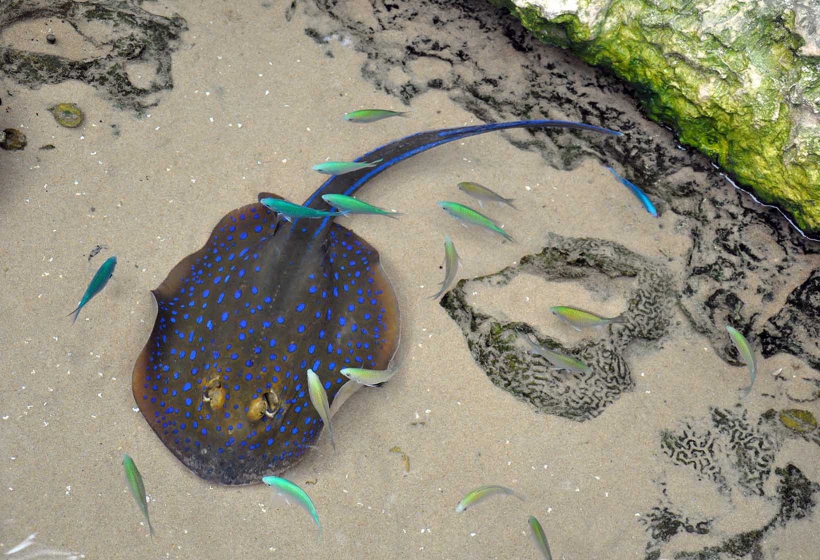Ribbontail stingray

Biology
This ray owes its name to the bright blue patches it has on its back, making it easily recognizable. It feeds near the beach, in groups and during the flood tide. When the tide goes out, the group breaks up and the ribbontail stingray hides in holes and reef crevices. When disturbed it uses its tail as a whip to defend itself. The tail has one or two powerful, venomous spines that may cause severe wounds.
Conservation
This species is coral-dependent, therefore the destruction of this ecosystem threatens its survival.
Curiosities
The ribbontail stingray uses electroreceptors to identify and communicate with members of the same species. To do this, it uses structures called ‘ampullae of Lorenzini’, which allow it to detect slight electrical impulses within water.
